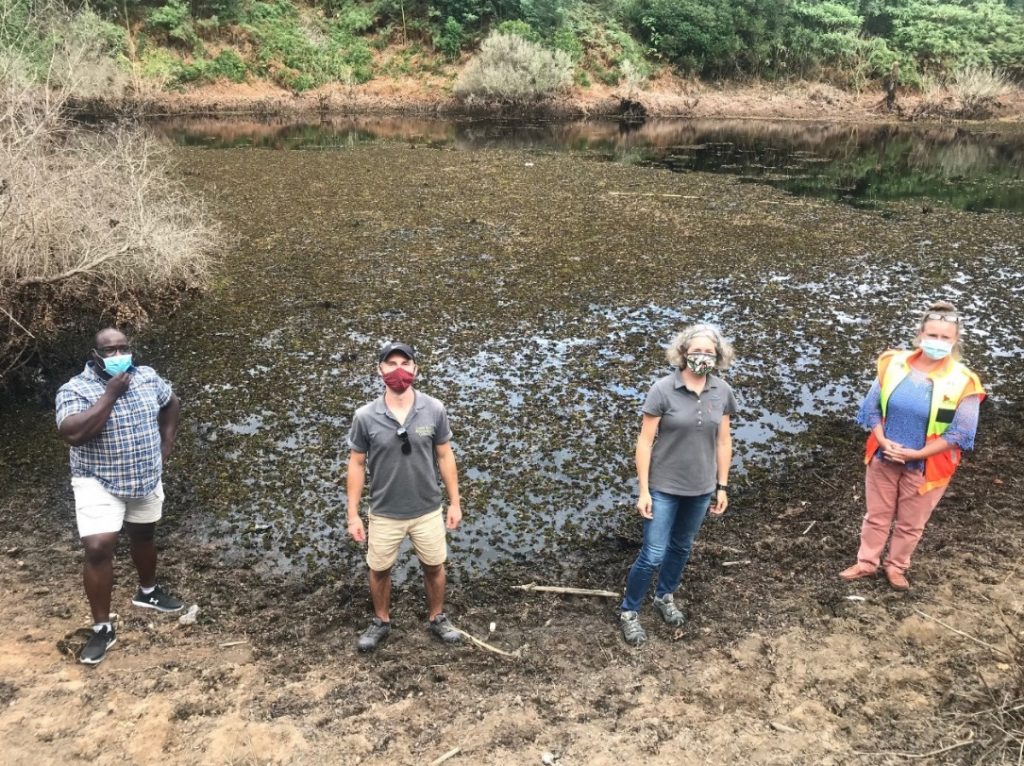The George Municipality is taking the Kariba Weed infestation at the Garden Route dam very seriously. Here is their latest press release regarding the problem.
George Municipality is seeing excellent results following the release of 1500 weevils as part of a multi-faceted plan to sustainably manage Kariba Weed infestation in the Garden Route Dam.
“The municipality is fully aware of the presence of Kariba Weed in the dam, as well as the causes for it, and is working alongside experts in the field to manage the problem holistically,” said George Municipality Superintendent Parks and Recreation Priscilla Burgoyne.
Weevils of the species Cyrtobagous salviniae were released mid-February 2021 at the Kat River inlet into the dam and near the dam wall where most of the Kariba Weed grows. Upon follow-up investigation, studies confirmed a 91% infection uptake and a significant reduction in the amount of dead plant material is expected once the weevils have established.
The weevils reproduce constantly and is expected to stay and reproduce as long as it has Kariba Weed to feed on. The larvae do the most damage as they bore into the stem of the plant and disrupt the vascular system, hollowing it out. The adults eat away at the growing tip which stops growth.
“We are grateful to be working with specialists in the Aquatic Weeds Programme at the Rhodes University Centre for Biological Control, which is currently undertaking studies in the Garden Route Dam. During a visit to the infection sites, the unit indicated that the infestation was not currently a concern as the surface coverage was proportionally small compared to overall size of the dam and could be effectively addressed with a few interventions.
“The Parks and Recreation section is developing a management plan with the assistance of aquatic specialist Dr Jackie Dabrowski and will comprise biological control, manual removal and spraying when necessary. We hope to combine funding with other relevant municipal departments to implement practical sustainable solutions that will address the issue as long as it is necessary.
“The municipality assures the public that this matter is well in hand, is being addressed by learned experts in their fields, and that there is no current threat of oxygen depletion or eutrophication as has been suggested by non-expert members of the public citing ‘Wikipedia’ as their source of reference,” said Ms Burgoyne.
The municipality has already reported on the upgrades of the Eden Pump Station, situated in the Kat River above the main Kariba Weed site, in the 2020-2021 financial year. This project was prioritised because of its proximity to the Garden Route Dam, although sewage is in any case always chemically treated to neutralise the impact of possible spillage.
When a spillage occurs anywhere, it is cleaned and chemically treated as soon as possible. The George Municipality has a scheduled water sampling programme and results are submitted to the Department: Water and Sanitation, who are the custodians of all water sources and courses, as is required in terms of legislation.
Contamination in the Kat River is also attributed to its proximity to built-up areas and it is inevitable that debris, garden and household effluent and other pollution from human habitation are flushed into the water course.
